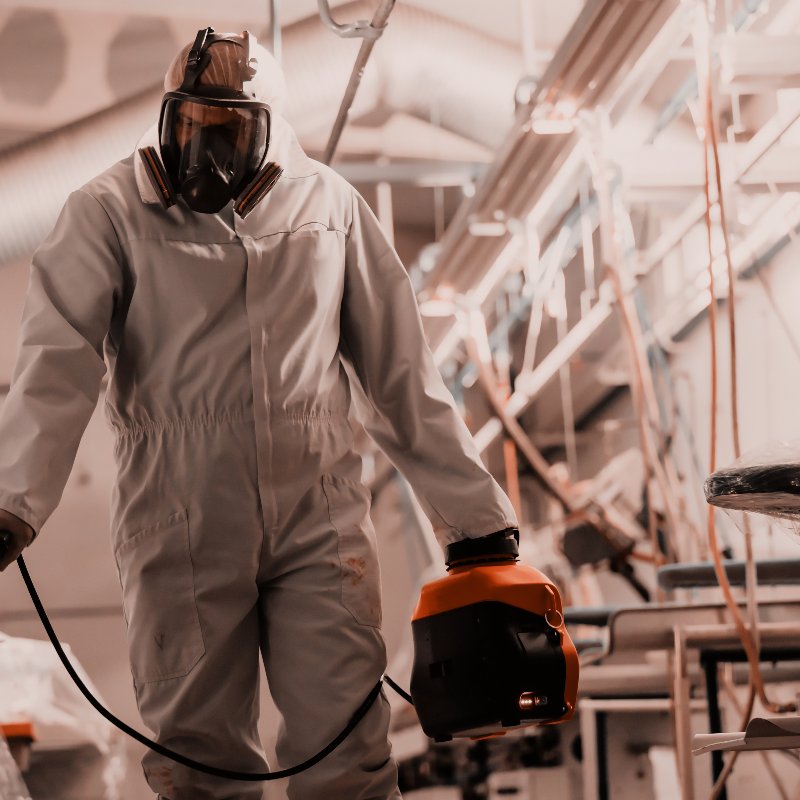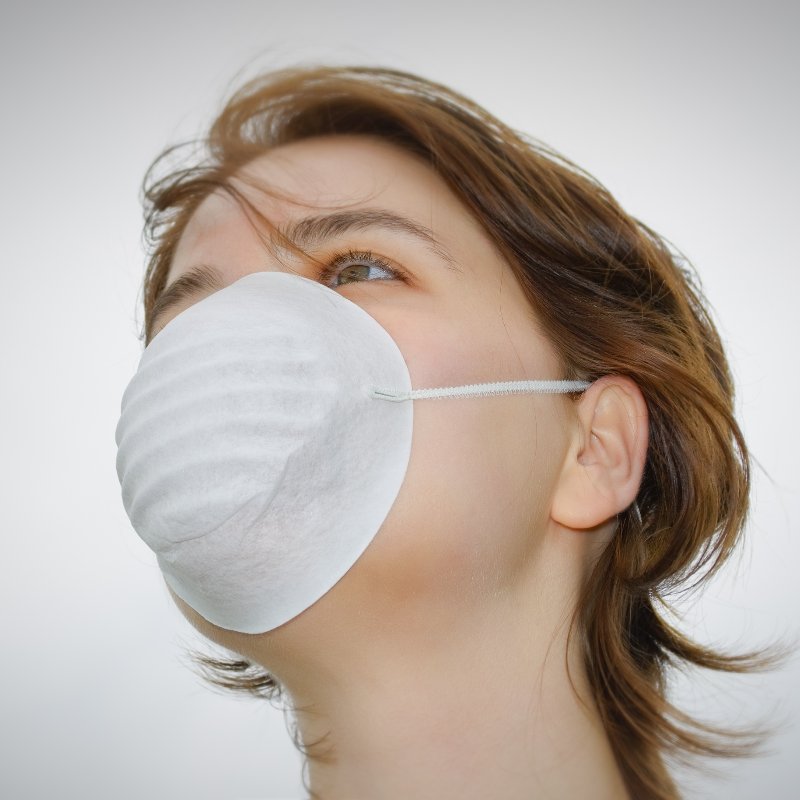
What is a “Biohazard”?
The word ‘biohazard’ is a worrisome word, especially when used in the term, biohazard cleanup. What is the meaning of biohazard? Biohazard is a shorten version of the term ‘biological hazard” and refers to biological substances that present a threat to the health of humans and other living organisms. The hazard can contain medical waste, microorganism, toxins of biological sources, or viruses, all which can be harmful to the health of humans and other living organisms.
What does biohazard cleanup do?
Biohazard cleanup is when an area is completely cleaned, sanitized, and deodorized. The more commonly known time a biohazard cleanup is done is at a crime scene, a suicide scene, or after a traumatic accident.
The process of a biohazard cleanup requires the technicians to wear protective clothing, including gloves and goggles, to handle what could be potentially hazardous materials. Those hazardous materials include in situations such as accidents, crime, and suicide scenes including blood and body fluids.
A biohazard cleanup has extensive methods, what the professionals of that job call a two-step process:
- The control zone – This is the contaminated area where the biohazard cleanup and removal is taking place; the area is placed under control.
- The buffer zone – This is the area where the biohazard cleanup technicians put on their PPE (personal protective equipment) prior to starting the cleanup and where they dispose of all contaminated materials when the cleanup is completed, including their PPE.
- The clean zone – This designated area is clean for the storage of equipment and tools so they can’t cause any cross-contamination with the substance involved in the biohazard cleanup.
It is crucial to the outcome of investigations and the legal actions that will follow that the scene of a crime or trauma is handled with the utmost care. The possible evidence at the scene cannot be altered or damaged for legal reasons, and there is the concern of safety for those doing the biohazard cleanup and everyone around them as well.
The technicians that are assigned to biohazard cleanup duty have completed specialized training in their job as dictated by OSHA. That training includes the possible exposure to bloodborne pathogens. There are other forms of biohazards that we’ll discuss as we continue this article.
What is biohazard crime scene cleanup?
Anytime there is blood or body fluids spilled, they can become trapped on the ceiling, floors, and walls. These potential bloodborne pathogens, including body fluids, can cause illness in humans, either immediately, or years later.
A crime scene biohazard cleanup is a specialized process of removing any contaminants that can be potentially harmful. Those contaminants include blood, body fluids, and odors. The blood and body fluids can inhibit bloodborne pathogens that include the potential of causing diseases.
Is cleaning up blood dangerous?
The short answer to this question is yes. The handling of blood should always be handled with care and caution, including blood stains. According to CD (Centers for Disease Control), blood is a potentially hazardous substance because of the diseases it can spread, no matter how old the spill or stain may be.
Blood of any kind can contain various bloodborne pathogens including:
- HIV
- Hepatitis B
- Hepatitis C
- MRSA
- Other transmittable diseases
Some bloodborne viruses continue to live in dried blood like Hepatitis B and Hepatitis C.
What is unattended death cleanup?
An unattended death is when a person was alone when they passed. Often the remains are not found immediately, it may be hours, days, weeks, or even months. An unattended death will typically include:
- An accident
- A suicide
- Fatal disease or illness
- A homicide
- Natural causes
The process, once the body is discovered, is considered a biohazard cleanup by specially trained professionals. Their biohazard cleanup begins after the body is removed and officials have declared it ready for the process to begin.
The biohazard cleanup of an unattended death is the special handling of any blood and other body fluids in a way that can be tested for further investigation by law enforcement. The biohazard cleanup and remediation includes the process of eliminating possible harmful substances associated with the remains, both obvious and unseen.
Can you get sick from cleaning up feces?
YES! Cleaning human feces and urine is considered a biohazard cleanup process. Proper training should be required of any employee that may be asked or required to clean up any human waste. It is important to remember that a biohazard is any type of biological substance that can be considered a threat to a living organism, primarily humans.
This includes blood carrying bloodborne pathogens or human tissues, or anything that has come into contact with any human fluid or human waste. These are articles that be the host for any infectious diseases, making any cleaning of human waste a biohazard cleanup process. Human feces can have any of the following organisms:
- C-diff
- Cholera
- Dysentery
- E. coli
- Giardia
- Hookworm
- Norovirus
- Ringworm
- Salmonella
- Tapeworm
Insect and rodent droppings are another extremely unsanitary substance that biohazard cleanup precautions should be observed. Rodent droppings are known to contain bacteria and different diseases that can be unwittingly transmitted to humans and animals.
What is hoarding cleaning?
Hoarding cleanup is considered a biohazard cleanup because of the possibility of bacteria and germs that could exist. Within a hoarding situation, there may be live and dead animals, their feces, urine, and body fluids as well as the hoarding human. By being exposed to these conditions without any protection again bacteria, fungus, or other pathogens is extremely dangerous.
How much does professional odor removal cost?
Every situation and every odor requires a different odor elimination process, some are considered part of biohazard cleanup, and others are for personal concerns. A professional odor removal company will provide a deep cleaning from top to bottom that will reach and removes the most stubborn of odors, with permanent eradication.
To remove odors, the rates can start at $80 per hour and go up to $300 per hour. deodorize a house? An average-sized home can take between 1 and 2 hours for basic odor elimination. A fire cleanup or any type of biohazard cleanup can take up to 8 hours, depending on the size of the house.
Professional odor removing services include:
- Tobacco smoke
- Fire, ash, smoke, and soot
- Pet dander
- Mildew and mold
- Water damage
- Decaying food
How much does biohazard cleanup cost?
A biohazard cleanup requires a deep and thorough process that includes the ceiling, flooring, and walls as well as any furniture in the area. Biohazard cleanup jobs include removing substances that are considered dangerous and is done by personnel that has been trained. Rates for a biohazard cleanup can start at $1,500 and max out at $25,000, depending on the size of the biohazard situation and what may be included as biohazard substances.
How much does rodent cleanup cost?
According to experts, rodent extermination can cost between $200 and $600 for an average size home, with the average cost being around $300. This includes a full-service professional cleanup that includes inspecting the area, treating the area, and steps that are taken to keep rodents from returning.

Concluding The Biohazard Cleanup Subject
It is important to understand that a biohazard cleanup is much more detailed than even the most detailed spring cleaning a homeowner could perform. There are chemicals and processes used for certain substances that not only remove the spill or stain, but remove any possibility of bacteria, disease, and germs from infiltration and spreading.

